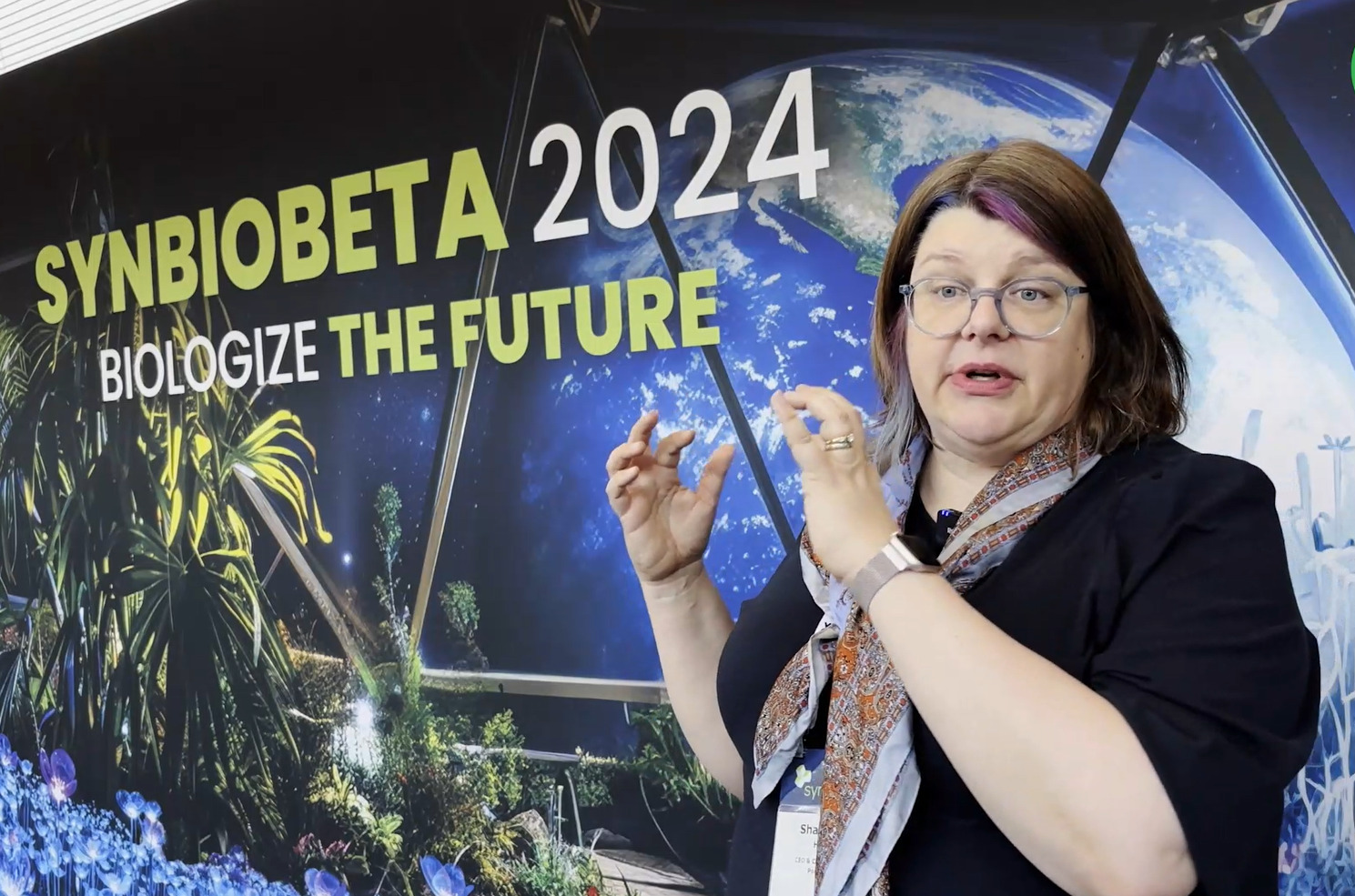These days, you can engineer microbes to produce pretty much anything, although it doesn’t always make commercial sense, says Berkeley-based startup Pow.bio. But could a continuous, rather than a batch approach, change that equation?
While it doesn’t work for every ingredient, says cofounder and CEO Shannon Hall, running a fermentation process more like an assembly line than a series of cookie batches can drive “multi-fold increases in productivity” and enable firms to cut costs by using smaller, more efficient bioreactors to achieve the same output.
AgFunderNews caught up with Hall at the SynBioBeta conference in San Jose to find out more…
Batch vs continuous processing
In a traditional batch precision fermentation process, microbes proliferate (the growth phase) until they reach critical mass in a fermentation tank and are then triggered to start producing a target molecule via a change in the media (the production phase). The batch is then completed, the ingredient is extracted, the tank is cleaned, and the whole process starts all over again.
This, claims Pow.bio, is slow and repetitive. Every time you set up, you need to sterilize everything, grow the cells, trigger them to produce the product, harvest it, and repeat this process over and over and over.
In contrast, Pow.bio has found a way to maintain microbes in an ultra-productive state for weeks in a process it claims can cut capex costs and increase biomanufacturing capacity by orders of magnitude by combining continuous fermentation with advanced control methodology.
Decoupling the growth from the production phase
Pow.bio’s platform effectively decouples growth [of the host microbes] and production [of the target ingredients], “solving the problems of contamination and genetic drift,” claims Hall, who cofounded Pow.bio with microbiologist Dr. Ouwei Wang in 2019.
“We’ve broken fermentation into unit operations so that we can focus on the performance parameters in each step. We focus on growth, then on production, and then on product recovery, so we can have a true conveyor belt of cells in, product out.
“In doing so we’ve created an environment that is unlikely to induce mutation in the first stage, and we’ve created an environment that resists contamination in the second stage. And in practice, we’re able to measure that there aren’t contamination events or that there aren’t genetic mutation events.”
She explained: “There’s a small bioreactor that’s driving growth and a larger bioreactor that’s all about production, and a connection between the two. We have put an enormous amount of engineering into the software and the hardware to manage the rate of flow. And then we are constantly recycling cells, recovering product and managing the biomass. So all of that is built into our system and managed by autonomously driven software.”
The business model
The aim is to license and support Pow.bio’s technology in multiple environments, said Hall, who raised a $9.5 million series A round led by Re:Food and Thia Ventures last fall taking the startup’s cumulative funding to $13.5 million.
“We do services for proof of concept, and we do services where we make small amounts of material from grams to hundreds of kilos. From there, the math and the techno-economic analysis is going to help you understand: Is this something I want to own? Is this something I want to rent?”
The stacked risk problem in biomanufacturing
But if continuous fermentation tech like this is such a no brainer, why isn’t everyone doing it? And given that most startups rely on contract manufacturers for scaleup, doesn’t this require buy in on their part?
According to Hall: “I think people have plenty of risk already and the infrastructure is already built for fed-batch approaches… it’s a stacked risk problem. For a long time people have been like, Hey, let’s work the incumbent process because our energy, our money, our vision, is all about a design platform, our end product.”
But the benefits of a continuous process are clear, she added: “Fundamentally, you can build a smaller facility to generate the same amount of output. So you’re clearly going to have a better return on invested capital and a faster internal return rate.
“When we model continuous systems using Pow.bio technology for a greenfield site, we find that we’re getting 30% lower at the least, and sometimes, 70% lower costs.”
She added: “Nobody wants to pay for the capex to build infrastructure. Everybody’s looking around the table wondering who else could pay? Maybe this is a government initiative? In fact, I don’t think there will be one payer. I think that there’s an opportunity to pull interested parties together to make sense of it all.”
Further reading:




